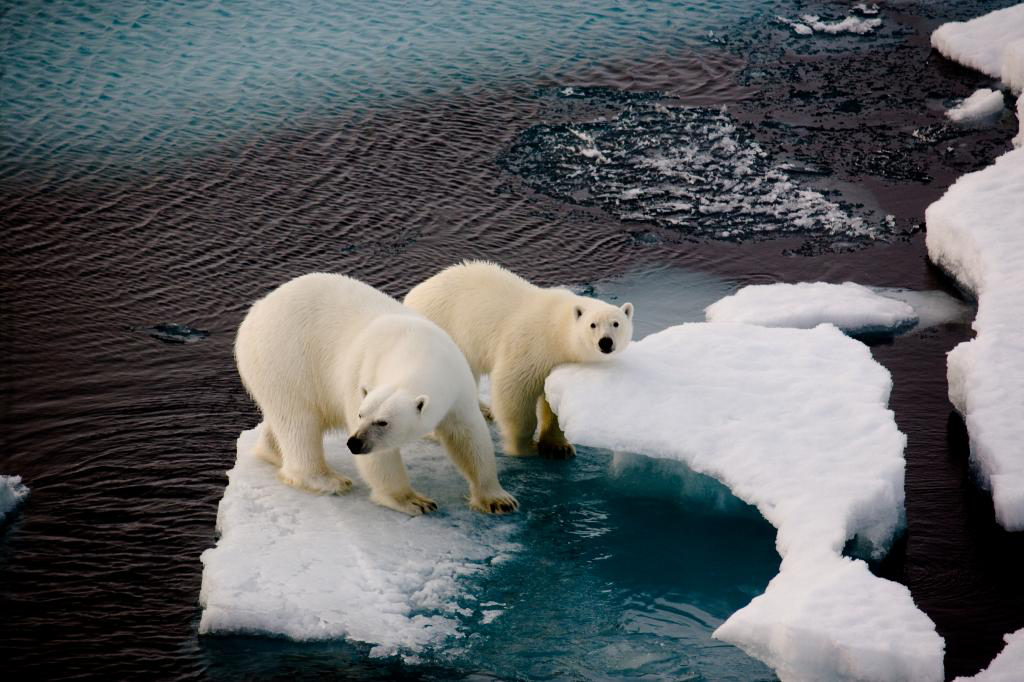Description

Disclaimer: Copyright infringement not intended.
Context
A study published in the journal Nature Geoscience that reveals the emergence of a new source of methane in the Arctic: groundwater springs.
Details
- Climate change has exposed a new source of methane in the Arctic: groundwater springs.
- Methane, a potent greenhouse gas, is being released as retreating glaciers allow methane-rich groundwater springs to emerge.
Study Findings
- A study published in the journal Nature Geoscience reveals that groundwater springs in the Arctic are emitting substantial amounts of methane.
- The springs were identified in Svalbard, a Norwegian archipelago in the Arctic, where more than 2,000 tonnes of methane are estimated to be emitted annually.
- These emissions account for around 10% of Norway's annual methane emissions from the oil and gas energy industry.
Impact of Global Warming
- The accelerated warming of Svalbard provides a preview of potential methane release on a larger scale across the Arctic region.
- As global warming continues, the extent of methane release from glacial groundwater springs is likely to increase.
Characteristics of Groundwater Springs
- Satellite images were used to identify groundwater springs exposed by retreating glaciers in Svalbard.
- Water chemistry analysis of over a hundred springs revealed high levels of dissolved methane, which is released into the atmosphere.
- These springs emit methane year-round.
Geological Factors
- Rocks play a crucial role in regulating the emissions of groundwater springs.
- Areas where groundwater emerges from shale rocks were found to be methane hotspots.
- Methane is likely sourced from geologic or thermogenic (heat) processes, moving upward through fractures in the rocks and accumulating under the glacier.
Potential Methane Reservoirs
- The presence of high methane concentrations near shale rocks suggests the possibility of significant amounts of trapped methane under glaciers.
- Melting glaciers could release additional methane, necessitating an assessment of the risk of sudden methane leakage.
Importance of Understanding Arctic Methane Release
- Improved understanding of pan-Arctic methane release from groundwater springs is necessary.
- It will help evaluate the significance of such emissions and their potential global climate impact.
- Regions with large reservoirs of geologic methane, such as Arctic Canada and the Russian Arctic, require particular attention.

About Norway
- Norway is a country located in Northern Europe on the Scandinavian Peninsula.
- Known for its stunning natural landscapes, Norway is famous for its fjords, mountains, and northern lights.
Geographical Features
- Norway shares borders with Sweden, Finland, and Russia.
- The country has a long coastline along the North Atlantic Ocean, including the famous fjords, deep inlets carved by glaciers.
- The landscape is characterized by mountains, plateaus, and valleys, with the Scandinavian Mountains running along the western border.
Political Structure
- Norway is a constitutional monarchy with a parliamentary system.
- The King of Norway, currently King Harald V, serves as the ceremonial head of state.
- The country has a multi-party system, and the Storting, or the Norwegian Parliament, is the legislative body.
Economy and Welfare State
- Norway has a prosperous mixed economy, largely driven by its natural resources, including oil, gas, hydropower, and fisheries.
- The country is known for its high living standards, extensive social welfare programs, and strong emphasis on egalitarianism.
- The Norwegian government manages the country's wealth through its sovereign wealth fund, known as the Government Pension Fund Global.
Natural Resources and Environmental Stewardship
- Norway is one of the world's leading producers of oil and natural gas, with significant offshore reserves in the North Sea.
- The country has made efforts to transition to renewable energy sources, particularly hydropower, and has set ambitious climate goals.
- Norway is also committed to environmental conservation and sustainable management of its natural resources.
Social Indicators and Quality of Life
- Norway consistently ranks high in global indices measuring quality of life, including the Human Development Index and the World Happiness Report.
- The country prioritizes education, healthcare, and social security, contributing to a high standard of living and social well-being.
Cultural Heritage and Viking History
- Norway has a rich cultural heritage, including its Viking history, which has left a lasting impact on the country's identity.
- Traditional Norwegian arts, crafts, folklore, and music continue to be celebrated and preserved.
- The Sami people, indigenous to parts of Norway, have a distinct culture, language, and traditions.
Outdoor Activities and Tourism
- Norway's breathtaking natural landscapes make it a popular destination for outdoor activities such as hiking, skiing, and fishing.
- The country offers opportunities for exploring national parks, glaciers, and the Northern Lights.
- The coastal areas and fjords attract tourists for cruises and scenic boat trips.
|
PRACTICE QUESTION
Q) Discuss the implications of methane emissions from groundwater springs in the Arctic for global climate change. Suggest measures to mitigate methane release from groundwater springs and address the challenges posed by this phenomenon. (150 words)
|

https://www.downtoearth.org.in/news/climate-change/climate-change-unveils-new-methane-source-groundwater-springs-of-norway-90427














